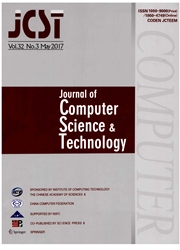

 中文摘要:
中文摘要:
适应框架 / 地编码技术为交叉顺序 coding 在许多国际录像标准被采用了。当框架 / 地改编在图画水平上被使用时,编码效率极大地被改进,与纯框架 coding 或纯地 coding 相比。编码的图画级的适应框架 / 地(PAFF ) 选择框架编码或为一幅图画编码一次的地。如果这框架 / 地改编被扩大到宏块(MB ) 水平,编码效率愿望进一步被增加。在这篇论文, novelMB 水平适应框架 / 地(MBAFF ) 编码方案被建议。在建议 MBAFF 计划,当前的图画的最高的地被用作一本参考书。实验分别地在视频编码标准(AVS ) 底介绍的声音和 H.264/AVC 的平台上被实现。在 AVSplatform 上, 0.35dB 获得能平均被完成,与 AVS1.0 锚相比。在 H.264/AVCplatform 上, 0.16dB 获得能平均被完成,与 H.264/AVC.Additionally 的 MBAFF 计划相比,广泛的主观优秀改进能被建议计划完成。
 英文摘要:
英文摘要:
Adaptive frame/field coding techniques have been adopted in many international video standards for interlaced sequence coding. When the frame/field adaptation is applied on the picture level, the coding efficiency is improved greatly, compared with the pure frame coding or the pure field coding. The picture-level adaptive frame/field coding (PAFF) selects frame coding or field coding once for one picture. If this frame/field adaptation is extended to Macro Block (MB) level, the coding efficiency will be further increased. In this paper, a novel MB-level adaptive frame/field (MBAFF) coding scheme is proposed. In the proposed MBAFF scheme, the top field of the current picture is used as a reference. The experiments are implemented on the platforms of Audio Video coding Standard (AVS) base profile and H.264/AVC, respectively. On the AVS platform, 0.35dB gain can be achieved averagely, compared with AVS1.0 anchor. On the H.264/AVC platform, 0.16dB gain can be achieved averagely, compared with MBAFF scheme of H.264/AVC. Additionally, an extensive subjective quality enhancement can be achieved by the proposed scheme.
 同期刊论文项目
同期刊论文项目
 同项目期刊论文
同项目期刊论文
 期刊信息
期刊信息
